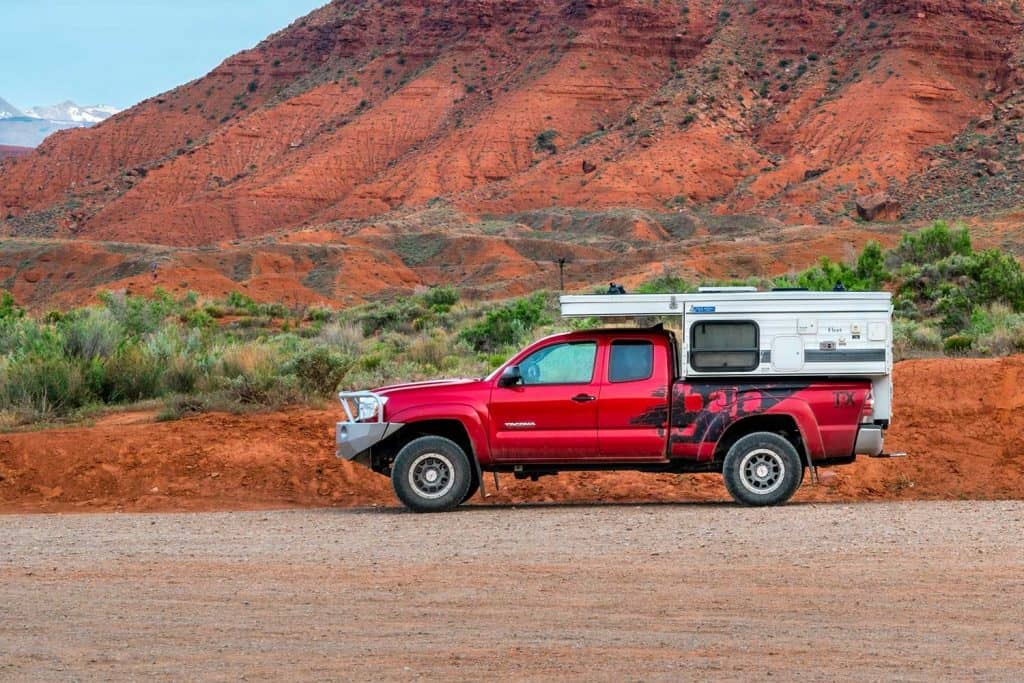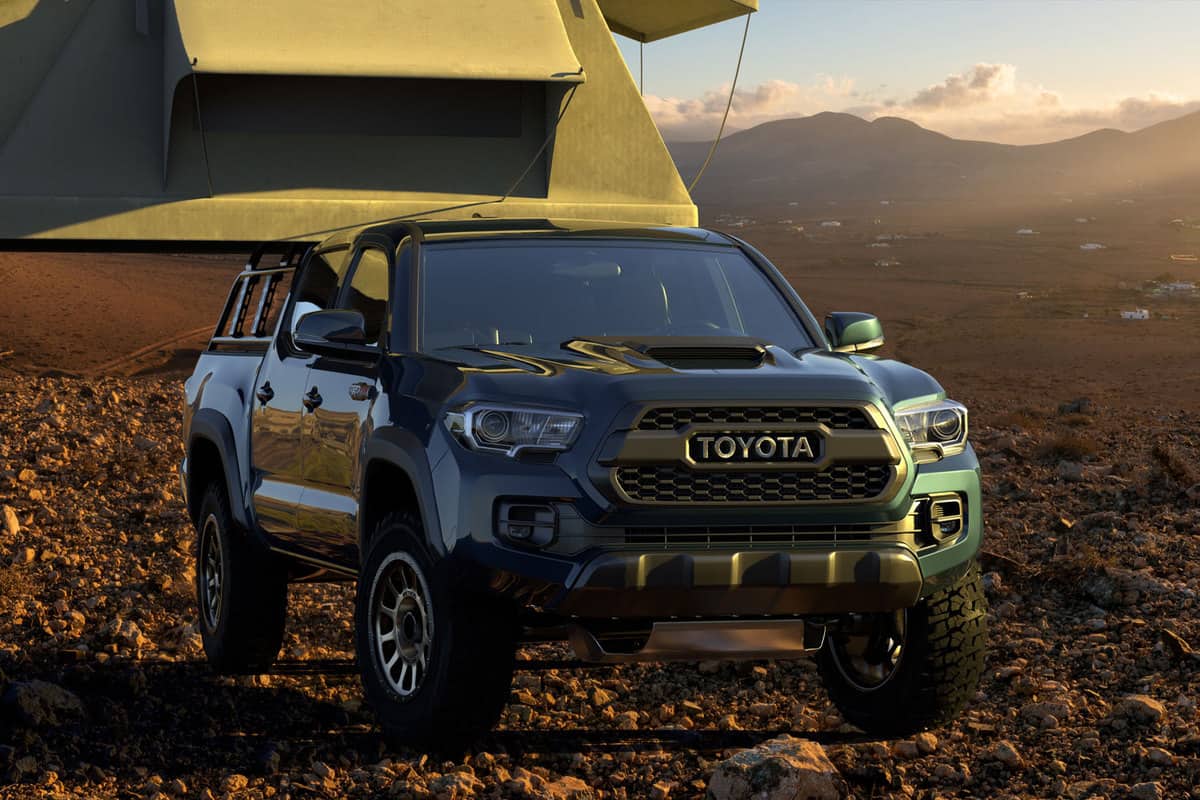The Toyota Tacoma may not be a full-size pickup truck, but it does have excellent offroading capabilities. However, you might have a problem when you get into the thick of it and won't go into 4WD. What could cause such a reliable truck to have this problem? We have researched to figure out these possible culprits.
There are several variables as to why your Toyota Tacoma won't go into 4WD. We have listed the possible reasons below:
- Low or dirty transfer case fluid
- Faulty solenoid
- Bad transfer case motor
- Faulty 4WD selector switch
- Bad front axle disconnect switch
- Worn out 4WD components
- Clogged master cylinder
- Loose or worn front axle U-joints
- Damaged CV shaft
- Loss of power
- Faulty 4WD actuator
- Bad transfer case control module
We get it; that's an overwhelming list! That's why in this article, we take a closer look at each one to help determine why you are having issues with your 4WD system. In addition, we will discuss common problems that Toyota Tacomas have, so read on!

Tacoma Won't Go Into 4WD—What Could Be Wrong?
The Toyota Tacoma is known to be a reliable truck that has excellent offroading capabilities. However, like any vehicle on the market, there can be mechanical issues. With that said, one of the most common issues people can have with their truck is that it won't go into four-wheel drive (4WD).

Even though this issue is widespread, it's not necessarily an easy problem to solve. Several things can cause your vehicle to lose power and refuse to go into 4WD. Here are the most common:
Low or Dirty Transfer Case Fluid
A transfer case is a component that contains and directs your vehicle's power to both its front and rear axles. The transfer case fluid helps calm and lubricate this critical component.
When there's not enough fluid, it can cause damage to the internals of the transfer case, which can make it challenging to shift into a 4WD. Low fluid also means reduced lubrication, which can cause low or no engagement when you try to shift into 4WD. This is by far the most common reason that customers bring this issue to attention.
Faulty Solenoid
A solenoid is an electrical switch that can be opened or closed using electricity. This provides a controlled path for the transfer case fluid to enter and exit, engaging your four-wheel-drive system.
Conversely, a faulty solenoid can prevent fluid flow in and out of the transfer case, which will likewise prevent your truck's four-wheel drive system from engaging.
Bad Transfer Case Motor
The transfer case motor is responsible for opening and closing the various valves that direct power inside your truck. A faulty transfer case motor can prevent those valves from working as they're supposed to, which will keep your 4WD system from engaging.
This problem generally only occurs on older trucks with a cable-operated shift mechanism—not all vehicles have a transfer case motor.
Faulty 4WD Selector Switch
Your four-wheel drive selector switch tells your truck when to engage four-wheel drive, letting you choose between 2WD, 4H, and 4L. Unfortunately, if this switch is faulty or damaged, it can prevent your truck from shifting into a four-wheel drive.
This problem commonly occurs after a truck has been submerged in water, leaving the electrical components of your four-wheel drive system susceptible to corrosion and damage.
Bad Front Axle Disconnect Switch
Your front axle disconnect switch prevents your front wheels from turning when you're in two-wheel drive mode, sending power from your transmission to both axles instead of just one.
This ensures that power goes to the rear wheels when you're in two-wheel drive and allows your front wheels to turn as needed when four-wheeling. However, a faulty or damaged front axle disconnect switch can prevent your truck from entering four-wheel drive because it sends power only to the rear axle rather than both axles.
Worn Out 4WD Components
With some vehicles, it's normal to use some power when engaging four-wheel drive. However, if you're using excessive force to get your truck into four-wheel drive or if you hear grinding or squealing noises while shifting into your four-wheel-drive system, it could be an indicator that the components of your four-wheel-drive system are worn out.
In this case, your best bet is to have a qualified technician inspect your 4WD components and make any necessary repairs or replacements.
Clogged Master Cylinder
The master cylinder is the component that pushes fluid into the brake booster to apply the brakes. When it's clogged, sometimes air can get trapped in it and cause your vehicle to lose power.
Loose or Worn Front Axle U-Joints
A front axle u-joint connects your truck's drive shaft to its wheel hub assembly. These joints lock together when the axle is in four-wheel drive and allow your truck to continue rotating if one of its tires loses traction. However, if these joints are loose or worn, you may lose power when shifting into four-wheel drive.
Damaged CV Shaft
A CV (or Constant Velocity) joint is a type of universal joint that allows your driveshaft to spin at an infinite number of angles. If this component is damaged, you may lose power when trying to shift into 4WD. The same issue can happen if the driveshaft disconnects from the transfer case while driving in a four-wheel drive.
Loss of Power
Sometimes, something as simple as a faulty sensor can cause your truck to lose power when you try to shift into four-wheel drive. A faulty throttle position sensor or oxygen sensor, for instance, could explain why you're not getting any power when trying to go into a four-wheel drive. Since every system is interconnected in today's vehicles, it's best to have an expert diagnose the problem.
How do I know if my 4WD Actuator is bad?
This is the motor that sends power to your truck's front differential. If this part malfunctions, it won't send the necessary power to the front wheels, so they can drive in four-wheel-drive mode.
It's a sign the 4wd actuator is bad if it won't wholly engage into 4WD or gets stuck. You may notice that your front wheels will spin when you try to put the truck into four-wheel drive.
This is because your 4WD Actuator isn't sending power to them, so they can't turn. Replacing this part requires a bit of work, but it's not tricky if you have experience with car repairs.

How do I know if my transfer case control module is bad?
The most common sign that the transfer case control module is bad is if the 4WD won't engage. The control module is the brain of the 4WD and sends signals to the vehicle to switch to 4W. If it doesn't recognize the communication, then it won't engage at all.
The transfer case control module can sometimes be diagnosed using a scan tool. With the ignition turned off, connect the scan tool to your vehicle's OBD-II diagnostic link and cycle through each screen until you find one that provides info about your transfer case.
If the module is bad, it should show "Transfer Case Control Malfunction" on this screen. If not, you'll need to have a certified technician inspect your four-wheel-drive system for any other issues.
What are the most common problems with Toyota Tacomas?
Every vehicle, at some point, had great years and bad years. The Toyota Tacoma is no different, and there are some years that you should avoid according to Toyota Problems. Here are the following years that you should avoid and why:
- 2006: Paint flaking off
- 2009: Radio breaks without warning
- 2016: Hesitations and hard shifts (including delayed engagement in cold climates)
- 2017: Not shifting properly
Remember that these issues are not the only problems you should look out for when buying a Toyota Tacoma. These are just some of the most common, and handling them early could save you from dealing with expensive repairs down the road.
What is the average life of a Toyota Tacoma?
The average life of a Toyota Tacoma varies depending on the year, model, and if you've performed regular maintenance. For example, Motorbiscuit and Motor and Wheels say that the Toyota Tacoma will last 200,000 and 300,000 miles. However, Vehicle History says on average you can expect a life span of a Toyota Tacoma to be 15 years.
The longer you own it, the more problems may arise. For example, if not appropriately maintained over its lifetime, issues like stalling can appear at any time after buying it.
It's important to know what you're getting yourself into when purchasing a used vehicle. Be sure to inspect every inch of the truck closely and ask for service records if possible before making a purchase.
That's why it is great to look at a CarFax Report before making a buying decision. So what is a CarFax Report? First, the report will tell you the vehicle's history, such as accidents, number of owners, title status, and any maintenance history. These are excellent reports to have and could save you a headache down the road.

Final Thoughts
Overall, Toyota has done a great job with every generation of Tacoma. However, that doesn't mean issues won't arise. If you have issues such as a truck won't go into 4WD, get in touch with a certified mechanic. Four-wheel drive systems are complicated, and as you can see, there are several reasons it is acting up!
If you enjoyed this article, then you should also check out:
Is the Toyota Tacoma A Good Off-Road Truck?
Toyota Tacoma: How Much Horsepower And Torque?
What year Toyota Tacoma do you have? Leave us a comment below!

had pretty good luck with my 2009 Tacoma but 4 wheel drive stop working this summer what oil should be used in transfer case thanks lewis where do you think problem might be
2004 Tacoma over 200000 miles
Well maintained. Basic repairs brakes rotors battery exhaust oil change 5 speed!! Awesome truck still drives as well as when we bought it used in 2009. Everything still works!!!